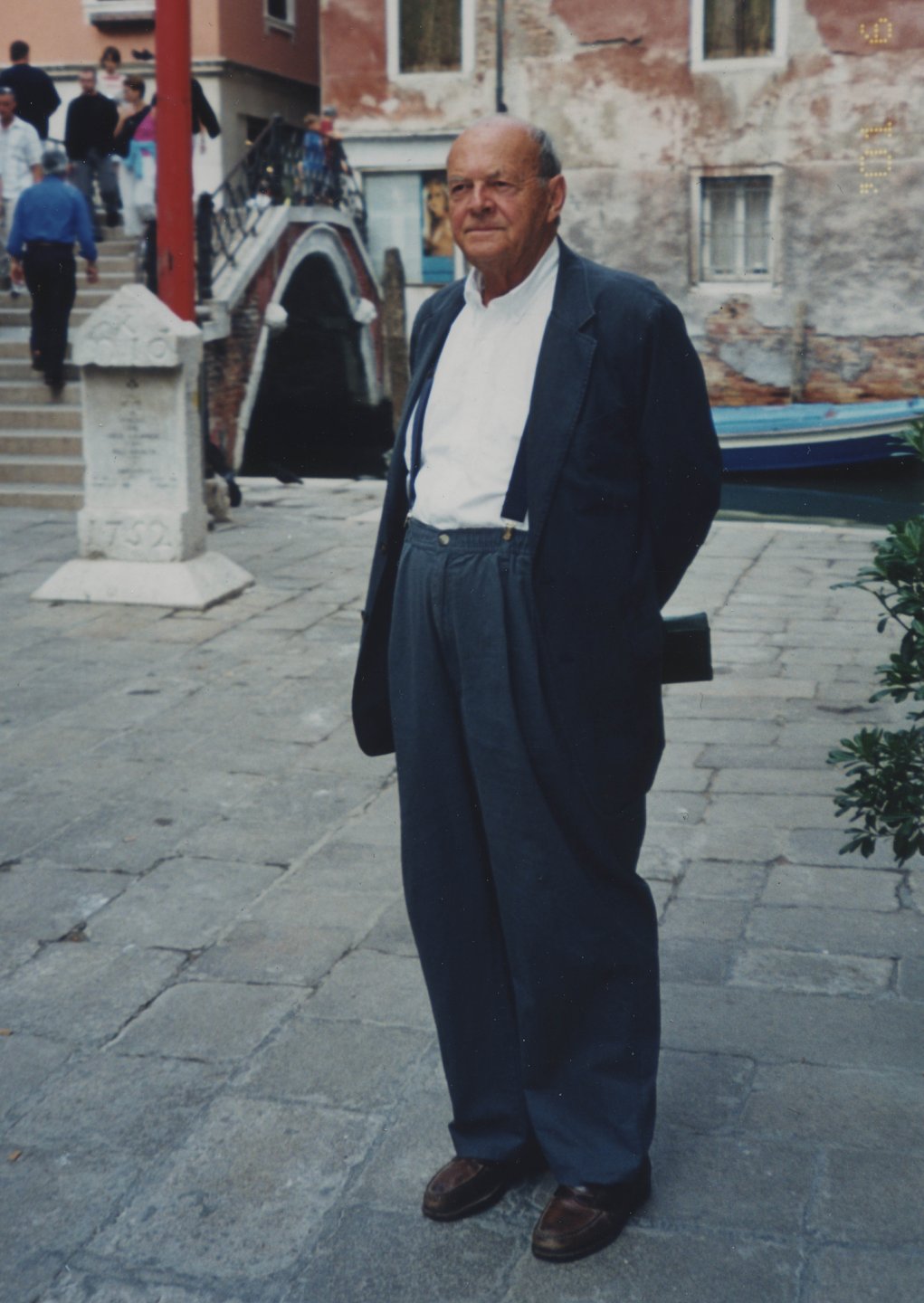Cy Twombly
Edwin Parker Twombly is born in 1928 in Lexington, Virginia. The nickname “Cy”, from the famous baseball player “Cy” Cyclone Young, is the same as his father’s, who was a pitcher for the Chicago White Sox.
The artist first studies at the School of the Museum of Fine Arts in Boston (1947-1949), enters the newly established department of Art at the Washington and Lee University in Lexington (1949-1950) and, on a tuition scholarship, he continues his studies at the Art Students League in New York (1950-1951), where the American post-war art scene is in ferment....Read more
Edwin Parker Twombly is born in 1928 in Lexington, Virginia. The nickname “Cy”, from the famous baseball player “Cy” Cyclone Young, is the same as his father’s, who was a pitcher for the Chicago White Sox.
The artist first studies at the School of the Museum of Fine Arts in Boston (1947-1949), enters the newly established department of Art at the Washington and Lee University in Lexington (1949-1950) and, on a tuition scholarship, he continues his studies at the Art Students League in New York (1950-1951), where the American post-war art scene is in ferment.
Between 1951-1952 he attends the Black Mountain College in North Carolina and he gets to know visual artists, poets and composers who stimulate his intellectual curiosity.
In 1952 he receives a travelling scholarship from the Virginia Museum of Fine Arts and, with his friend and fellow student Robert Rauschenberg, goes off to Europe and North Africa. During his extensive travels throughout Italy and the Mediterranean, he deepens the study of the classical tradition, which will be a lifelong source of inspiration for his future artworks.
In 1953 he is drafted into the U.S. Army and assigned to the cryptography department in Washington D.C., where he remains stationed until the summer of 1954. His drawings from this period, characterized by abstract lines and signs, are made at night, in the dark, to regain the freedom of the sign and obliterate the repetitiveness of the task carried out daily for the army. These works will lay the ground for his first one-man show at the Stable Gallery in New York in 1955 and will direct his future works towards a style which will distinguish his artistic research in the years to come.
In 1958 he has his first solo exhibition at Plinio De Martiis' Galleria La Tartaruga in Rome, showing a selection of paintings. The exhibition will travel then to Galleria del Cavallino in Venice and to Galleria del Naviglio in Milan.
In the autumn he returns to New York and he signs up with Leo Castelli Gallery.
From this point forward he spends his time between Italy and the United States, when not travelling around the Mediterranean and the Middle East. He is passionate about Greek mythology, he is a fervent reader and his library includes classical authors such as Ovid, Virgil, Sappho and Modernists as Rainer Maria Rilke, Ezra Pound, Octavio Paz and more contemporary poets. Their lines and lyrics are source of inspiration for the titles and series of his artworks and often appear inscribed within his works.
In 1968, the Milwaukee Art Center organizes his first large museum solo exhibition in the United States, Cy Twombly: Paintings and Drawings, which includes a wide selection of works executed from 1956 onwards. This show is followed by major retrospectives at the Whitney Museum, New York (1979); Kunsthaus Zürich, Switzerland (1987), curated by Harald Szeemann, which will travel to Palacio de Velázquez/Palacio de Cristal, Madrid; Whitechapel Art Gallery, London; Städtische Kunsthalle, Düsseldorf; and Centre Georges Pompidou, Paris; and the Museum of Modern Art, New York (1994) curated by Kirk Varnedoe, which will travel to the Menil Collection, Houston; Museum of Contemporary Art, Los Angeles; and Neue Nationalgalerie, Berlin.
In 1995, the Cy Twombly Gallery, a museum founded by the de Menil family and designed by Renzo Piano in collaboration with the artist, opens in Houston housing a permanent collection of Twombly’s works.
In 1977 Cy Twombly takes part in Documenta 6 in Kassel and he is invited to the Venice Biennale in 1964, 1978, 1980, 1988, 1993 and 2001. On the occasion of the 2001 edition, he presents Lepanto, a series of paintings of twelve panels that depict the sea battle waged by the Holy League against the Ottoman Empire in the Strait of Lepanto, and he is awarded the Golden Lion.
In June 2008 the retrospective Cy Twombly: Cycles and Seasons, curated by Nicholas Serota, opens at the Tate Modern in London and it will travel first to the Guggenheim Museum, Bilbao, and, in 2009, to the Galleria Nazionale d'Arte Moderna e Contemporanea in Rome.
The most recent retrospective to honor the artist after his death, which occurred in Rome on July 5th 2011, is held at the Centre Georges Pompidou in Paris, curated by Jonas Storsve, in 2016.
For his outstanding achievements in the arts, in 1996 Cy Twombly is awarded the Praemium Imperiale by the Japan Art Association and in 2006 he receives the McKim Prize at the American Academy in Rome. In 2010 The Ceiling is unveiled, a site-specific work conceived by the artist for the Salle des Bronzes at the Musée du Louvre, and on this occasion he receives the Légion d’honneur.
Publications dedicated to Cy Twombly are many and important, among which of particular scientific relevance are the Catalogues Raisonnés of his Drawings and Sculptures, as well as the volumes dedicated to his photographic works, edited by Nicola Del Roscio, and the Catalogue Raisonné of the Paintings and the printed graphic works, edited by Heiner Bastian.
Courtesy Cy Twombly Foundation
Read less
Cy in Venice, 2001
© Fondazione Nicola Del Roscio, courtesy Archives Fondazione Nicola Del Roscio


